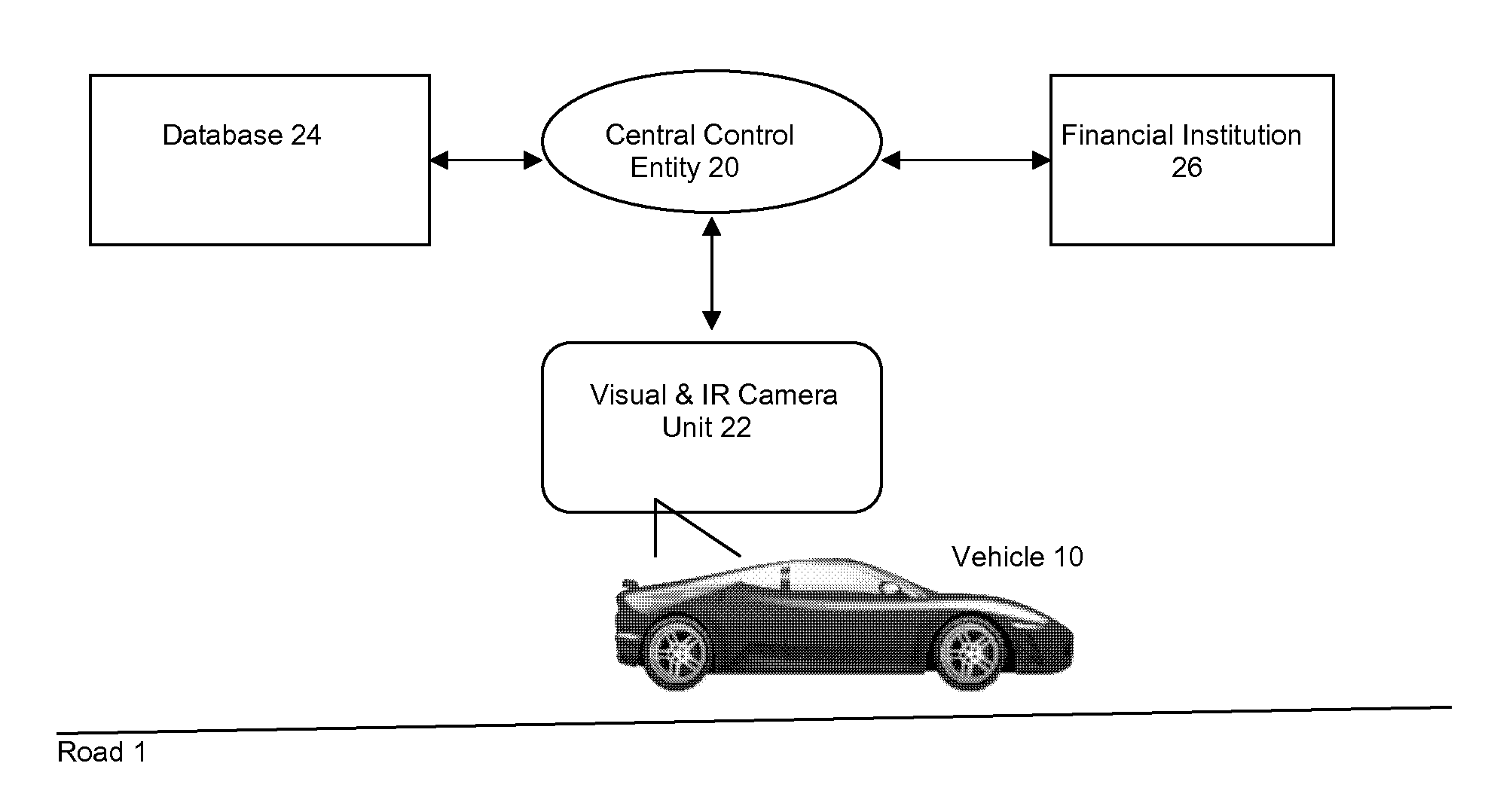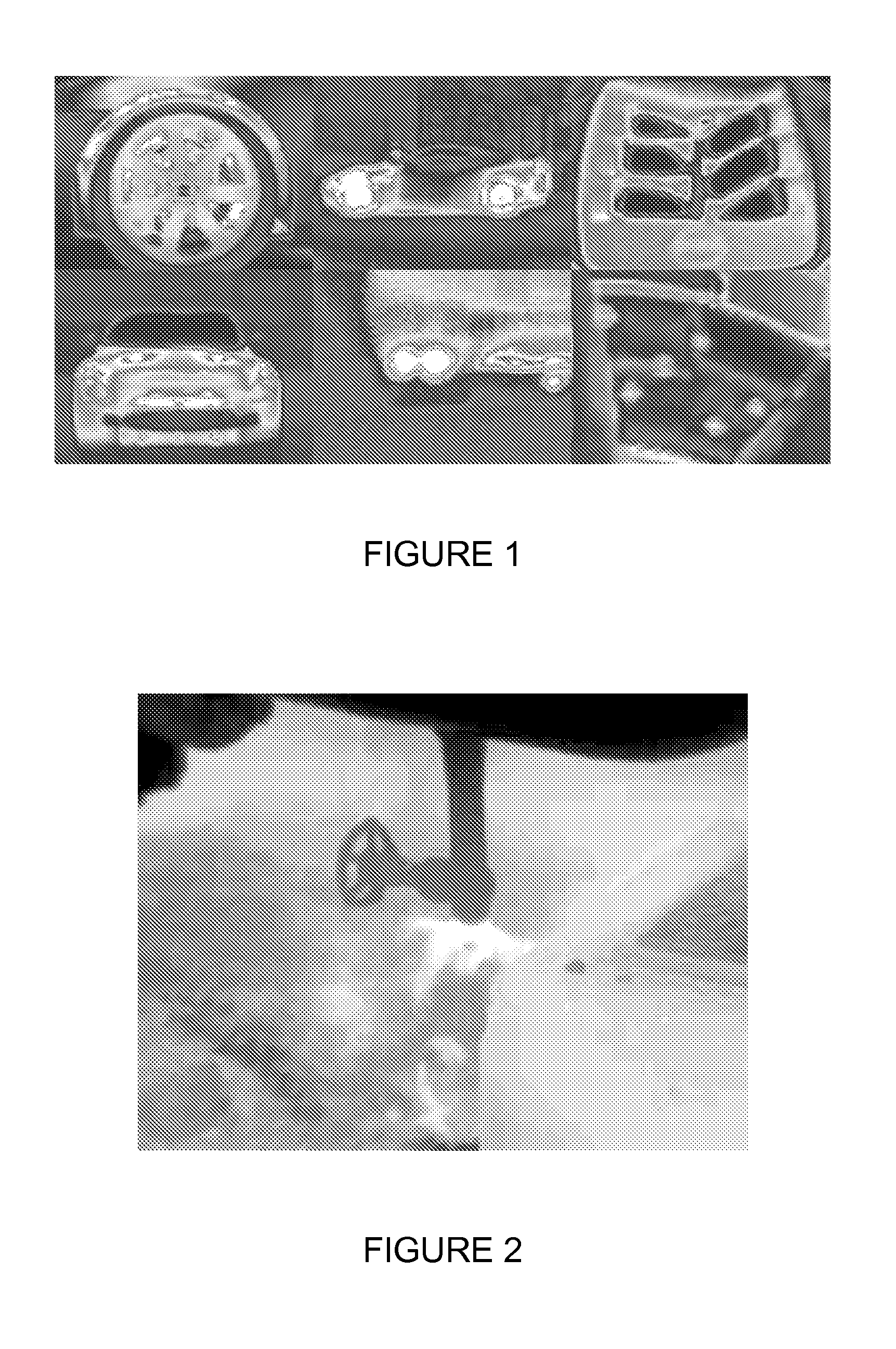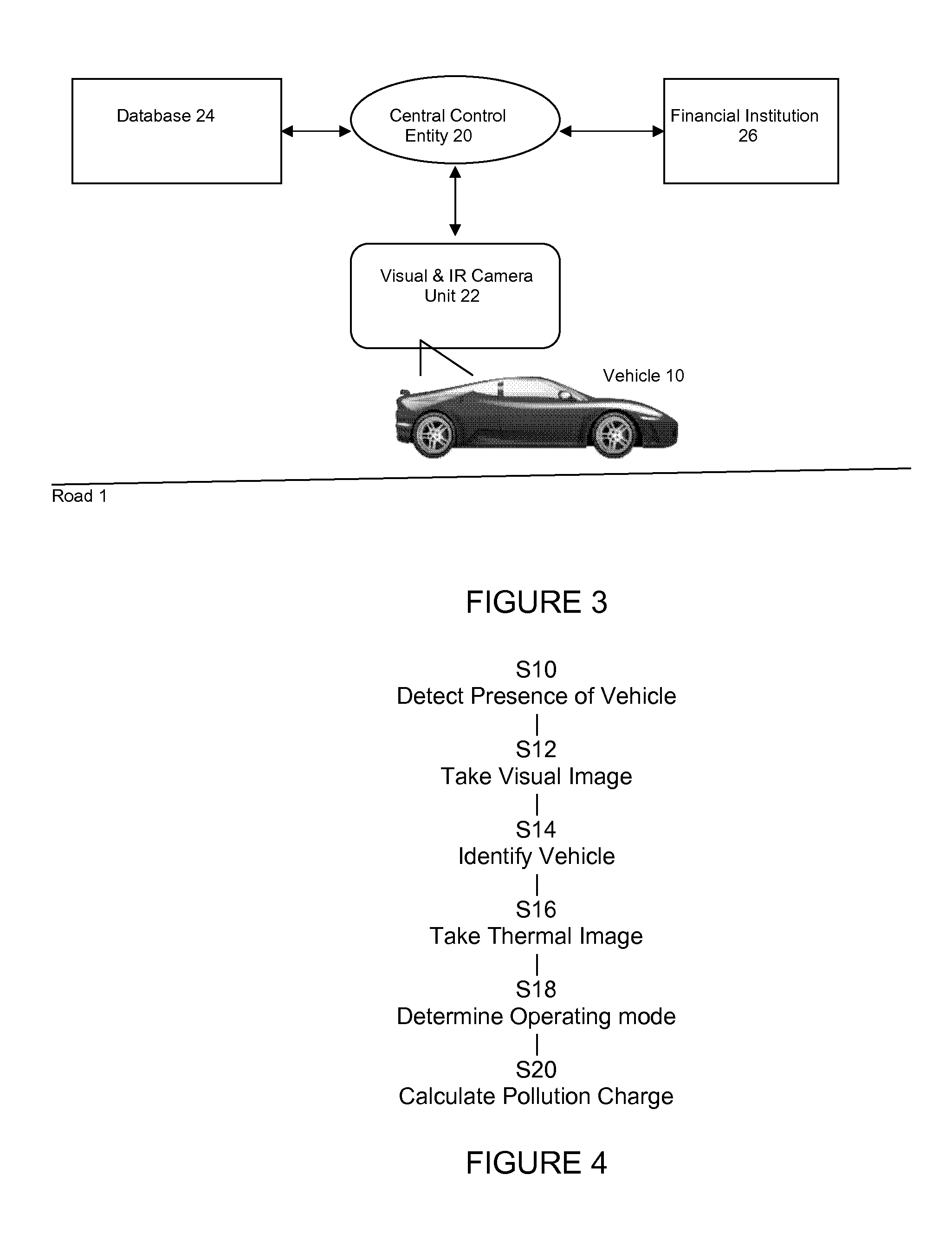Detecting operating mode of hybrid vehicles
a hybrid vehicle and operating mode technology, applied in the direction of instruments, structural/machine measurement, traffic control systems, etc., can solve the problems of insufficient incentives, insufficient air pollution in urban areas, and inability to take into account in what operating mode vehicles, etc., to achieve efficient policing of low-emission zones and save processing costs
- Summary
- Abstract
- Description
- Claims
- Application Information
AI Technical Summary
Benefits of technology
Problems solved by technology
Method used
Image
Examples
Embodiment Construction
[0069]Reference will now be made in detail to the embodiments, examples of which are illustrated in the accompanying drawings, wherein like reference numerals refer to the like elements throughout. The embodiments are described below to explain the present invention by referring to the figures.
[0070]A hot body (an object at a temperature higher than that of its surroundings) radiates infrared radiation. Thermal imaging allows this radiation to be visualized, and reveals the distribution of temperature over the hot body since the wavelength of infrared radiation varies with temperature.
[0071]A principle of the invention is to use thermal imaging for mode recognition of vehicles, by detecting the temperature signature of the exhaust pipe / engine / parts of chassis and to match that signature to a bank of thermal signatures (for exhausts / engines / chassis etc.) for various makes of cars operating in different modes.
[0072]FIG. 1 is a set of thermal images of a car running on an internal comb...
PUM
 Login to View More
Login to View More Abstract
Description
Claims
Application Information
 Login to View More
Login to View More - R&D
- Intellectual Property
- Life Sciences
- Materials
- Tech Scout
- Unparalleled Data Quality
- Higher Quality Content
- 60% Fewer Hallucinations
Browse by: Latest US Patents, China's latest patents, Technical Efficacy Thesaurus, Application Domain, Technology Topic, Popular Technical Reports.
© 2025 PatSnap. All rights reserved.Legal|Privacy policy|Modern Slavery Act Transparency Statement|Sitemap|About US| Contact US: help@patsnap.com



